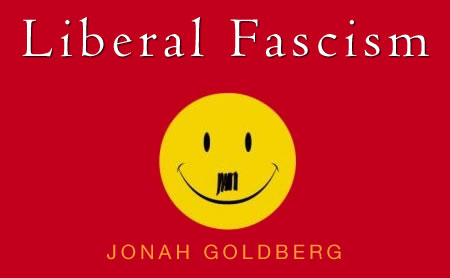Not since Mark Steyn’s America Alone have I read a book that was this important—Jonah Goldberg’s Liberal Fascism, is highly recommended. Why? Because it sets out the intellectual heritage of the ideology of the modern political left.
I purchased a copy of the hardcover edition when the book came out over two years ago. In July 2008 I started reading it—and my notes in the margins of the opening pages makes me wonder how I could’ve put it down. I clearly knew from the book’s start that the material being covered was very important. Why it took me two years to pick it back up is a mystery explained only by the massive amount of reading options that are out there 24/7/365.
To make up for my procrastination, I’m going to take two columns to argue why you shouldn’t wait to purchase it—it’s in paperback now and it’s a superb easy read.
On page two Goldberg explains:
[W]hat we call liberalism—the refurbished edifice of American Progressivism—is in fact a descendant and manifestation of fascism. This doesn’t mean it’s the same thing as Nazism.
Back in the 1980s when I was studying political science and political philosophy in college I remember having difficulty understanding why “fascism” would be classified as a “far right” political ideology.
President George W. Bush was called a fascist by his detractors based on the confusion of the left v. right political paradigm.
I don’t recall ever pressing the point with my two professors at the small college I attended—there were too many other things to learn. But something tells me that both professors, who are now deceased, would have appreciated Goldberg’s work and would put fascism back where it belongs—on the extreme “left” side of the ledger.
Fascism and Communism aren’t right/left opposites, Goldberg writes:
In reality, they are closely related, historical competitors for the same constituents, seeking to dominate and control the same social space.
On page 14 Goldberg puts words to what I’ve been thinking for years:
[I]t is my argument that American liberalism is a totalitarian political religion…
As you can see at the top right of this column, the cover of the book is red with a nice big yellow smiley face. Goldberg explains:
[I]n America, where hostility to big government is central to the national character, the case for statism must be made in terms of ‘pragmatism’ and decency. In other words, our fascism must be nice and for your own good.
Another one of the terrific lines early on is this:
America’s political system used to be about the pursuit of happiness. Now more and more of us want to stop chasing it and have it delivered.
Goldberg has done American conservatism a great service through this well-researched outline of the—my words here—anti-American ideology that motivates those who seek to “fundamentally transform” this country into something it wasn’t supposed to be.
I’ll take one more column to summarize a little more of what Goldberg delves into—but to close part 1, here’s his “working definition of fascism”—put into bullet points:
- Fascism is a religion of the state.
- It assumes the organic unity of the body politic and longs for a national leader attuned to the will of the people.
- It is totalitarian in that it views everything as political and holds that any action by the state is justified to achieve the common good.
- It takes responsibility for all aspects of life, including our health and well-being, and seeks to impose uniformity of thought and action, whether by force or through regulation and social pressure.
- Everything, including the economy and religion, must be aligned with its objectives.
I don’t know about you, but I agree with what Jonah Goldberg writes at the end of the paragraph containing his definition of fascism:
I will argue that contemporary American liberalism embodies all of these aspects of fascism.
Up next: More of my argument about why you should buy and read this book.

